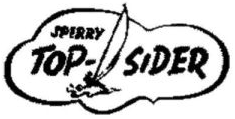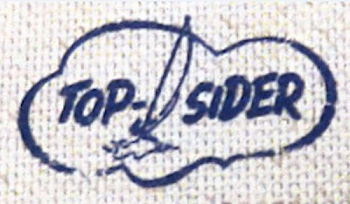A recent IP High Court case concerned the cancellation of a trademark registration due to the improper use of the registered mark (ie, in a manner that could lead the goods or services to be confused with those pertaining to the business of another person) by a non-exclusive licensee of the mark.(1)
Kent Japan Kabushiki Kaisha registered the trademark TOP-SIDER (Figure 1) and granted a non-exclusive right to use the mark to its licensee.
Sperry Top-Sider LLC initiated cancellation proceedings before the Japan Patent Office (JPO) Trial and Appeal Board (and subsequently an appeal in the IP High Court).
The registered trademark was first registered in the name of Sperry Top-Sider Inc, Sperry Top-Sider LLC's predecessor. It was then assigned to Kabushiki Kaisha BM Planning, which later changed its name to Kent Japan Kabushiki Kaisha.

Figure 1
|
Registration number |
1809362 |
|
Registration date |
27 September 1985 |
|
Classes |
16, 21, 24 and 25 |
|
Designated goods |
|
Sperry Top-Sider registered the device mark SPERRY TOP-SIDER (Figure 2).

Figure 2
|
Registration number |
5462438 |
|
Registration date |
13 January 2012 |
|
Classes |
25 |
|
Designated goods |
Footwear (other than special footwear for sports); special footwear for sports |
In 1935 Sperry Top-Sider created its iconic Top-Sider shoes with non-slip soles and began selling them in the United States. The shoes became the official shoe of the US Navy and gained popularity throughout the country.
In the 1970s Top-Sider shoes were introduced to the Japanese market; since then, the shoes have been sold in Japan through Sperry Top-Sider's distributors. The shoes have appeared in Japanese magazines, newspapers, dictionaries and novels and Sperry's trademark (Registration 5462438) has become well known among Japanese traders and consumers as a mark of origin of Sperry Top-Sider's shoes.
Use of TOP-SIDER mark by Kent's non-exclusive licensee
As mentioned above, Kent owned a registration for the word mark TOP-SIDER (Registration 1809362). However, Kent's non-exclusive licensee actually used the below mark (the trademark in use) (Figure 3).

Figure 3
Therefore, the issue in question was whether Kent's non-exclusive licensee's use of the mark amounted to improper use which could lead to the cancellation of the registered trademark under Article 53 of the Trademark Act.
Article 53(1) of the Trademark Act reads as follows:
Where a holder of an exclusive right to use or a non-exclusive right to use uses a registered trademark in connection with the designated goods or designated services or in connection with goods or services similar thereto, or a trademark similar thereto, in a manner that misleads as to the quality of the goods or services or can be confused with the goods or services pertaining to business of another person, any person may file a request for a trial for rescission of the trademark registration; provided, however, that this does not apply to cases where the holder of trademark right was not aware of the fact and exercised due care.
The requirements of Article 53(1) are as follows:
(A) The holder of an exclusive right to use or a non-exclusive right to use a registered trademark;
(B) uses;
(C) a registered trademark or a trademark similar thereto;
(D) in connection with the designated goods or designated services or in connection with goods or services similar thereto;
(E) in a manner that misleads as to the quality of the goods or services or can be confused with the goods or services pertaining to the business of another person; and
(F) there are no exceptional circumstances that the owner of the trademark right was not aware of the fact and exercised due care.
JPO Trial and Appeal Board decision
The JPO Trial and Appeal Board allowed Sperry Top-Sider's request and concluded that Kent's Registered Trademark should be cancelled. The JPO Trial and Appeal Board's findings on each of the requirements of Article 53(1) were as follows:
- Requirements A and B (ie, the holder of an exclusive right to use or a non-exclusive right to use a registered trademark... uses...) – the non-exclusive licensee of Kent's registered trademark had affixed the trademark in use on goods and sold the goods to a department store. Therefore, Requirements A and B had been met.
- Requirement C (ie, a registered trademark or a trademark similar thereto) – Kent's registered trademark comprised the phrase 'Top-Sider'. The trademark in use also contained this phrase and, while there were visual differences between the marks (ie, the cloud-like and yacht devices), they were similar. Therefore, Requirement C had been met.
- Requirement D (ie, in connection with the designated goods or designated services or in connection with goods or services similar thereto) – the trademark in use had been used on shirts, which fell within the scope of 'shirts and the like', as designated under the registered trademark. Therefore, Requirement D had been met.
- Requirement E (ie, in a manner that misleads as to the quality of the goods or services or can be confused with the goods or services pertaining to the business of another person) – although the trademark in use did not contain the word 'Sperry', it and Sperry's trademark both:
- contained the phrase 'Top-Sider' and the cloud-like and yacht devices; and
- featured the phrase and device in the same position.
Further, the level of similarity between the marks was extremely high. Sperry's trademark was highly unique and was to some extent well known among Japanese consumers and traders. Notably, the cloud-like and yacht devices (which were not features of the registered trademark) were intentionally added to the trademark in use, and this kind of use cannot be considered proper use from a common sense perspective.
In addition, the trademark in use was used on shirts, and consumers of shirts are general consumers. Sperry's trademark was used on shoes (eg, deck shoes), consumers of which are also general consumers. Shirts and shoes are both used on a daily basis by general consumers, and there is a high level of relatedness between these types of goods.
Taking into account the extremely high level of similarity between the marks and the high level of relatedness between the goods, the JPO Trial and Appeal Board held that Kent's non-exclusive licensee's use would lead to confusion in relation to the goods or services pertaining to Sperry Top-Sider's business. Therefore, Requirement E had been met.
- Requirement F (ie, and there are no exceptional circumstances that the owner of the trademark right was not aware of the fact and exercised due care) – it could be presumed that Kent had been aware of the use of its non-exclusive licensee's use of the trademark in use on shirts. Therefore, Requirement F had been met.
Kent filed an appeal against the JPO Trial and Appeal Board's decision to cancel Kent's registered trademark. However, the IP High Court upheld the board's decision. First, the court ruled that on the basis of the evidence and the overall arguments, Requirements A to D and Requirement F had been met.
In determining whether Requirement E (ie, in a manner that misleads as to the quality of the goods or services or can be confused with the goods or services pertaining to the business of another person) had been met, the court considered the following matters.
Uniqueness of Sperry's trademark and level of similarity with trademark in use
Sperry's trademark comprised the phrases 'Sperry' and 'Top-Sider' and a yacht device, surrounded by a cloud-like device. The mark's overall composition was highly unique.
Although the trademark in use did not contain the word 'Sperry', it was otherwise identical to Sperry's trademark. As such, the court held that the two marks were highly similar.
Reputation of Sperry's trademark
Sperry's Trademark had become well known among Japanese traders and consumers as a mark of origin of Sperry Top-Sider's shoes.
Relatedness of goods
The trademark in use was used on shirts, while Sperry's trademark was used on shoes. Both targeted general consumers.
Shirts and shoes are both apparel products and are often sold under the same brand. They are also often sold in the same shop and have the same manufacturer. As such, there is a high level of relatedness between shirts and shoes.
Manner of use
Kent's non-exclusive licensee added the cloud-like and yacht devices (which are not features of the registered trademark) to the trademark in use. As a result, the trademark in use had become highly similar to Sperry's trademark.
Was trademark in use used in manner that could lead to confusion with another party's goods or services?
Sperry's trademark was well known among Japanese traders and consumers as a mark of origin of Sperry Top-Sider's shoes. Considering the high level of relatedness between shirts and shoes, the high degree of similarity between the trademark in use and Sperry's trademark and the fact that the cloud-like and yacht devices (which were not features of the registered trademark) had been added to the trademark in use, the court held that the trademark in use had been used in a manner that could cause the goods in question to be confused with the goods or services pertaining to the business of another person.
Cases regarding cancellation based on Article 53 of the Trademark Act are rare, and cases in which requests to cancel a trademark registration on this basis are granted are even more so. As such, this case is an interesting example of how the JPO Trial and Appeal Board and the IP High Court determine improper use of a registered trademark.
Article 53 provides that a trademark registration should be cancelled if the mark is improperly used by a licensee (ie, in a manner that misleads consumers as to the quality of the goods or services or which leads to confusion with the goods or services of another person) and there are no exceptional circumstances to give relief to a trademark owner to avoid having its trademark registration cancelled (eg, the rights holder was unaware of the improper use and exercised due care). While the Trademark Act allows trademark owners to grant licences freely, Article 53 functions as a penalty provision to prevent improper use of registered trademarks by licensees.
This case suggests that trademark owners should monitor how licensees use their registered trademarks.
Endnotes
(1) JPO Trial and Appeal Board, Cancellation 2016-300561, judgment issued 22 March 2018; IP High Court, 2018 (gyo-ke) 10053 , judgment issued 26 September 2018.
This article was first published by the International Law Office, a premium online legal update service for major companies and law firms worldwide. Register for a free subscription.




